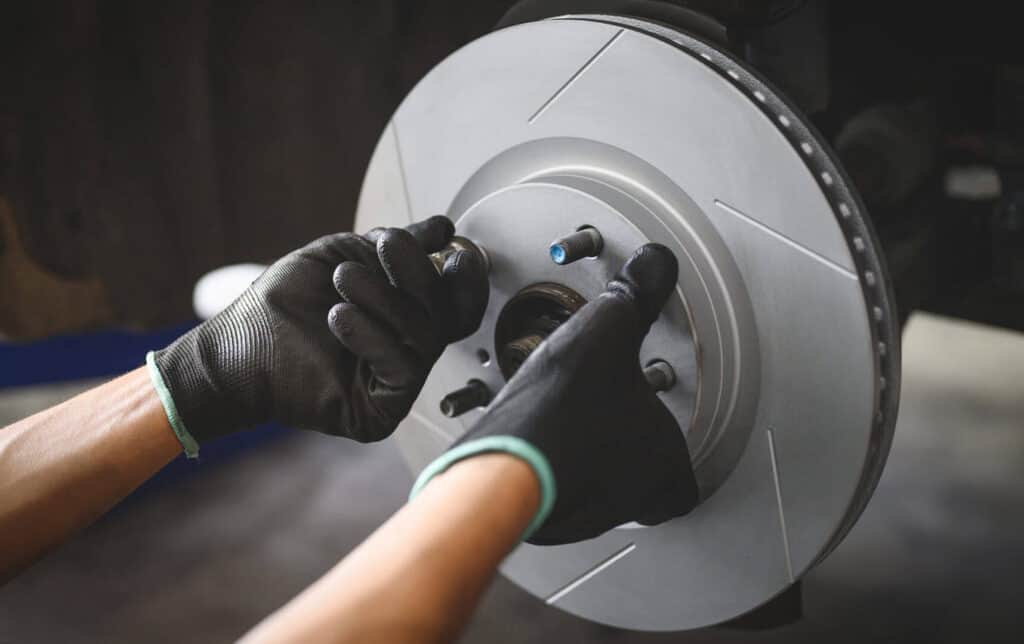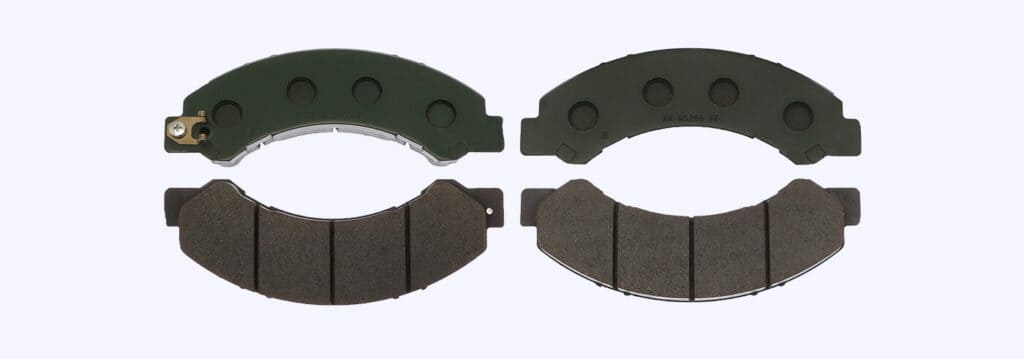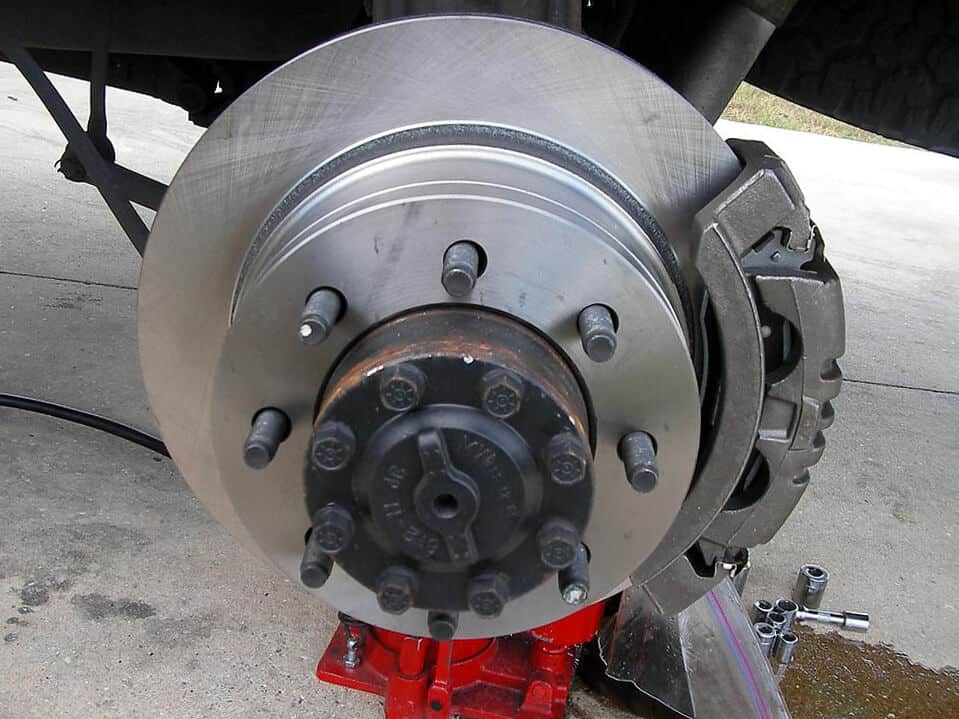Introduction: The Challenges of Managing Mixed-Use Fleet Vehicles
Managing a mixed-use fleet presents unique challenges due to the diverse nature of the vehicles involved. These fleets typically consist of passenger cars, light trucks and vans, and heavy-duty trucks and trailers, each with its own specific brake system requirements. Balancing the maintenance needs of different vehicle types can be a complex task, requiring fleet managers to develop customized maintenance schedules and ensure proper brake component selection.

Understanding the Unique Brake System Needs of Different Vehicle Types
Passenger Cars
Passenger cars often operate in urban environments, encountering frequent stop-and-go traffic conditions. This places higher demands on their brake systems, necessitating more frequent inspections and maintenance. Smaller vehicles typically use smaller brake components, which may wear more quickly than those found on larger vehicles.
Light Trucks and Vans
Light trucks and vans are often used for commercial purposes, requiring them to carry heavier loads and travel longer distances. These factors can increase wear on brake components, leading to more frequent maintenance requirements. Additionally, the braking performance of these vehicles must be able to accommodate the additional weight of the cargo they carry.
Heavy-Duty Trucks and Trailers
Heavy-duty trucks and trailers have the most demanding brake system requirements, as they carry significant loads and travel long distances. These vehicles typically feature larger brake components, designed to provide the necessary stopping power for their increased mass. Ensuring proper brake system maintenance is crucial to maintaining the safety and efficiency of these heavy-duty vehicles.
Brake Pad Material Selection for Mixed-Use Fleets
Organic Brake Pads
Organic brake pads are made from a combination of fibers, resins, and fillers, providing a cost-effective option for lighter vehicles. While they may wear more quickly than other materials, they offer the advantage of being relatively quiet and producing less brake dust.
Semi-Metallic Brake Pads
Semi-metallic brake pads are comprised of a mix of metals and other materials, providing improved heat resistance and braking performance compared to organic pads. They are suitable for a wide range of vehicle types, including light trucks and vans, but may produce more noise and brake dust.

Ceramic Brake Pads
Ceramic brake pads are made from a blend of ceramic fibers, fillers, and bonding agents, offering superior heat resistance and longevity. These pads are ideal for heavy-duty vehicles and those that require high-performance braking. However, they can be more expensive than other options and may cause increased rotor wear.
Brake Rotor and Drum Maintenance for Mixed-Use Fleets
Just as brake pad selection is critical for mixed-use fleets, so too is the maintenance of brake rotors and drums. Regular inspections should be conducted to identify signs of wear, cracking, or warping, which can compromise braking performance. Replacing or resurfacing these components as needed will help ensure optimal braking efficiency and safety across your entire fleet.
Brake System Inspection Frequency: Adapting to Different Vehicle Usage Patterns
Fleet managers must adapt their brake system inspection frequency to accommodate the different usage patterns of their mixed-use fleet vehicles. For instance, passenger cars operating in urban environments may require more frequent inspections, while heavy-duty trucks traveling long distances may need less frequent but more comprehensive checks.
Implementing a Customized Maintenance Schedule for Your Mixed-Use Fleet
Developing a customized maintenance schedule for your mixed-use fleet is essential to ensure that each vehicle receives the appropriate level of attention. This schedule should take into account the unique brake system requirements of each vehicle type, as well as factors such as driving conditions, cargo weight, and mileage.
The Benefits of Proactive Brake Maintenance in Mixed-Use Fleets
Improved Fleet Safety
By proactively maintaining the brake systems of your mixed-use fleet, you can significantly improve overall safety. Properly functioning brakes are crucial to preventing accidents and ensuring that your vehicles can respond effectively in emergency situations.
Reduced Vehicle Downtime
Regular brake maintenance can help identify potential issues early, allowing you to address them before they lead to more significant problems. This proactive approach can reduce vehicle downtime, minimizing disruptions to your fleet operations and improving overall efficiency.
Lower Maintenance Costs
By catching brake system issues early, you can often avoid more costly repairs down the road. This not only helps to keep your maintenance budget in check but also extends the life of your brake components, further reducing expenses.
Enhanced Fuel Efficiency
Well-maintained brake systems can contribute to improved fuel efficiency for your fleet vehicles. Properly functioning brakes can reduce drag and minimize energy wasted during braking, resulting in fuel savings over time.

Choosing the Right Fleet Maintenance Provider for Your Mixed-Use Fleet
Selecting the right fleet maintenance provider is critical for the effective management of your mixed-use fleet. Look for a provider with experience in servicing a diverse range of vehicle types, as well as one that offers comprehensive brake system maintenance services. It’s also essential to choose a provider that values clear communication and transparency, ensuring that you remain informed about the condition of your fleet’s brake systems.
Conclusion: Balancing the Brake System Health of Your Mixed-Use Fleet Vehicles for Optimal Performance and Safety
Effectively managing the brake system health of your mixed-use fleet vehicles is crucial for maintaining safety, performance, and efficiency. By understanding the unique brake system needs of different vehicle types, selecting the right brake components, and implementing a customized maintenance schedule, you can ensure that your fleet remains in top condition. Partnering with a knowledgeable and experienced fleet maintenance provider is key to achieving these goals, helping you to maximize the return on your fleet investment and maintain a safe and efficient operation.
